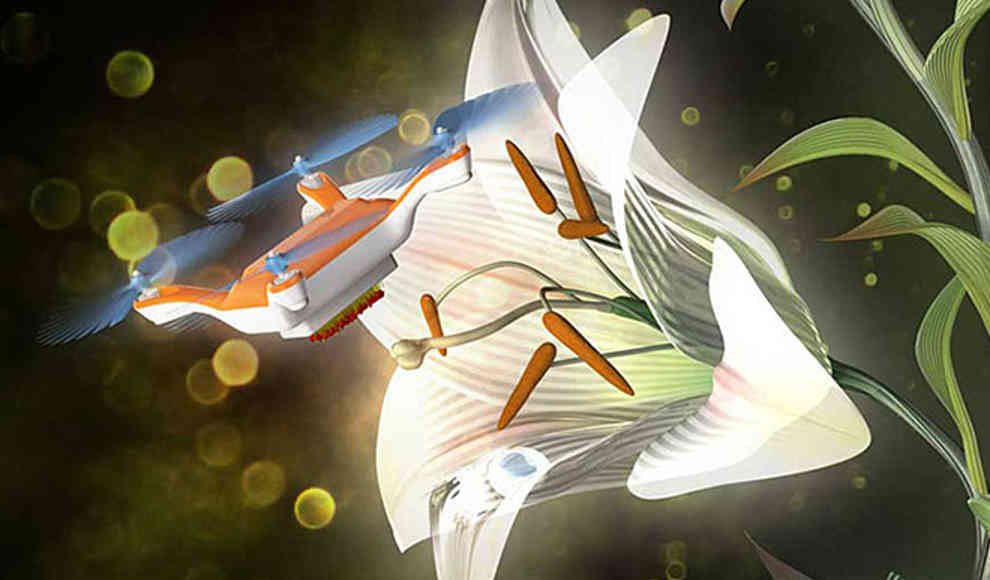The global decline of bees shows no signs of stopping, and Japanese researchers are already planning for a future without them. Bees are essential to the ecosystem, pollinating around 80% of the world’s land plants and ensuring the survival of trees, flowers, and indirectly, humans and other living beings. Recent studies suggest that if bees go extinct, humans will follow suit in just a few years. With the current bee crisis showing no signs of slowing down, Eijiro Miyako and his colleagues at the Japanese research institute AIST have come up with an alternative solution. In the event of a collapse of the ecosystem due to bee extinction, small automated drones will take over the task of pollination.
Miyako and his team were able to develop these drones using their ten-year-old research on sticky special gels. By attaching the gel to the underside of the drones, they were able to successfully pollinate plants in initial tests. Bees have fine hairs on their body surface that transport pollen, but in the case of these drones, a small quadcopter, measuring just under four centimeters, will take on this task using an ionic gel and electrostatic effects to collect and distribute pollen. The drones are also equipped with horsehair to increase the surface area for pollen transport and generate a higher electrostatic charge. While these drones are not the final version, they represent an important step towards a future where millions of remote-controlled quadcopters fly over fields and forests.
While it may seem like a dystopian future, the success of these drones in transferring pollen from one plant to another is a crucial step towards ensuring the survival of the ecosystem. However, there is still much work to be done, including improving the drones’ autonomy and developing a solar-powered battery. The researchers’ success in this area is an important development, as reported in the journal Chem. As the bee crisis continues, it is essential that we explore all possible solutions to ensure the survival of our planet’s ecosystem.










